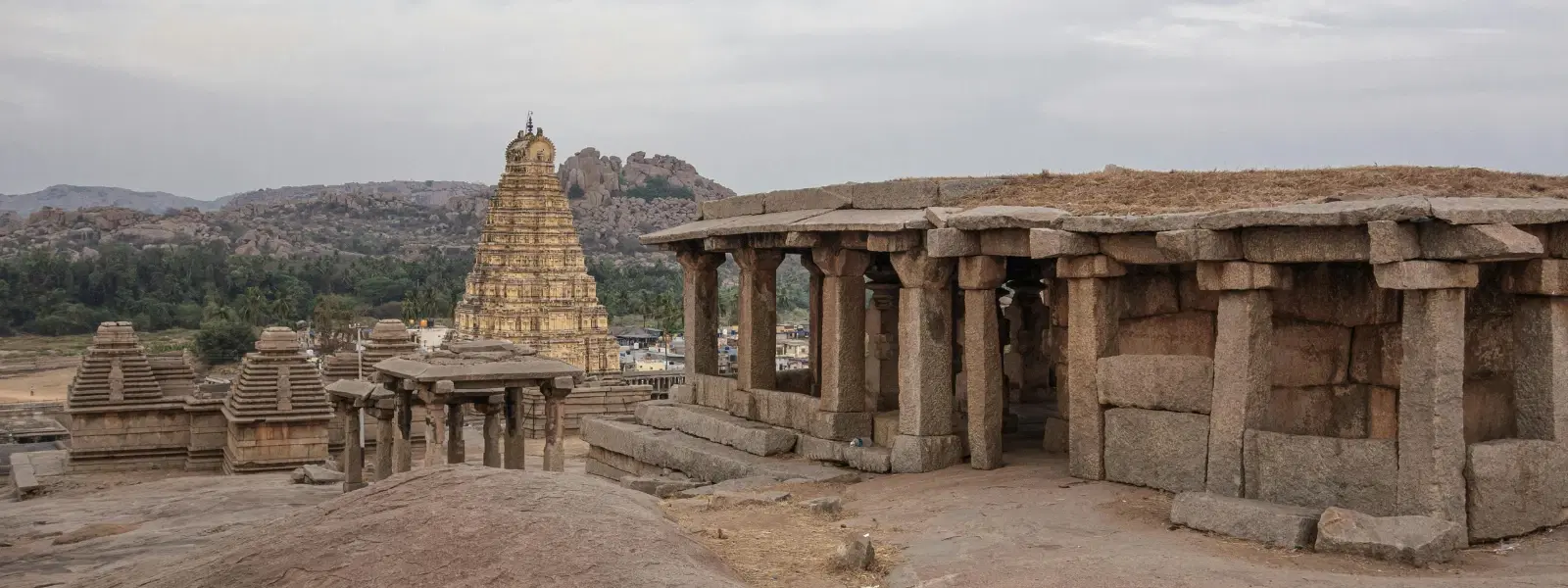
Hotels
•03 min read

Parasurameswara Temple stands as one of Odisha's earliest architectural jewels, offering a window into the origins of early Orissan temple art and architectural design. This ancient monument highlights the intricate craftsmanship of early Indian temple art and plays a crucial role in understanding the religious and cultural tapestry of ancient India. In this blog, we answer frequently asked questions about Parasurameswara Temple, delving into its architecture, sculptures, history, and the artistic heritage that underscores its unique position in art history.
Constructed during the 7th–8th century AD under the auspices of the Shailodbhava dynasty, Parasurameswara Temple exemplifies early Orissan temple architecture. Based on historical records, its establishment marks one of the earliest instances where architects and sculptors began experimenting with forms that would later evolve into iconic temple designs across Odisha. The temple’s ancient origins inspire awe and reverence for the craftsmanship of a bygone era.
Dedicated to Lord Shiva, the temple has significantly promoted Shaivism within the region. It venerates Shiva and echoes the narratives of other Hindu deities, including the Saptamatrikas. This religious importance is woven into both the temple’s artistic details and its overall design, reflecting the harmonious blend of spirituality and art that defined early Indian temple aesthetics.
The architectural style of Parasurameswara Temple is a vivid blend of Nagara and Kalinga influences. Its compact yet intricately detailed structure encapsulates early Orissan temple art. Notably, the temple’s west-facing orientation is unique among its contemporaries and holds symbolic significance in the cosmic layout envisioned by ancient architects. To ensure smooth transitions, this section builds on the historical context discussed earlier.
The temple is celebrated for its exquisite stone carvings that feature detailed depictions of Hindu gods, floral motifs, and mythological narratives. These sculptural elements are not only decorative but also serve as a medium to convey spiritual symbols and cultural stories of the era. The intricate techniques and artistic precision evident in these carvings mirror the early stages of Indian temple artistic traditions.

Parasurameswara Temple is considered the 'seed' of mighty Orissan temples like Lingaraj, Puri, and Konark, showcasing the evolution of temple architecture in Odisha.
The carvings in Parasurameswara Temple are much more than artistic adornments. Each sculpture is imbued with symbolic meanings and reflects the spiritual ethos of its time. Whether it’s the portrayal of divine beings or the intricate floral designs, these elements communicate the deep-seated beliefs and rituals that were central to daily life and religious practices long ago.
Parasurameswara Temple laid the foundational style that later temples, such as Mukteshwar and Lingaraj, would expand upon. Elements of its design have been echoed in the architectural plans of subsequent structures, influencing the evolution of not only stone carvings but also the overall planning of temple complexes in Odisha. This progression from simplicity to elaborate complexity is a testament to the enduring legacy of ancient Indian temple art.
Today, efforts are ongoing to preserve the rich heritage of Parasurameswara Temple. Conservationists and local authorities work together to maintain its structural integrity and ensure that future generations can continue to appreciate its historical value. As a celebrated cultural landmark, the temple attracts both scholars and tourists, reinforcing its importance in Odisha's artistic and cultural identity.
For those eager to experience this unique piece of history, visiting Parasurameswara Temple is both enlightening and enjoyable. Located in an area rich with historical landmarks, visitors can explore not only the temple itself but also nearby attractions like the Mukteshwar Temple and Lingaraj Temple. Whether you are The Wanderer seeking inspiration or The Planner looking for thoughtful itineraries, the temple offers something for everyone. This section expands on these personas to ensure first-time readers can relate and plan their visit accordingly.

Parasurameswara Temple is built in the Nagara style with Kalinga architectural influences, showcasing intricate carvings and a compact design.
The temple was constructed in the 7th–8th century AD during the Shailodbhava dynasty and is dedicated to Lord Shiva, representing early Orissan temple art.
Orissan temples are characterized by the Nagara style, featuring curvilinear spires, detailed carvings, and symbolic depictions of Hindu mythology.
The exact builder is unknown, but it is believed to have been constructed under the patronage of the Shailodbhava dynasty.
The temple features carvings of the Saptamatrikas, Lord Shiva, floral motifs, and mythological scenes, reflecting early Indian artistic traditions.
Explore additional resources or visit Parasurameswara Temple to uncover its artistic and historical wonders firsthand!
Parasurameswara Temple offers an inspiring journey through the roots of early Orissan temple art and architecture. Its historical significance, intricate architectural details, and symbolic carvings collectively reflect a time when art and spirituality were deeply intertwined. This ancient monument stands not only as a relic of the past but as a beacon for understanding the evolution of Indian temple art and heritage.